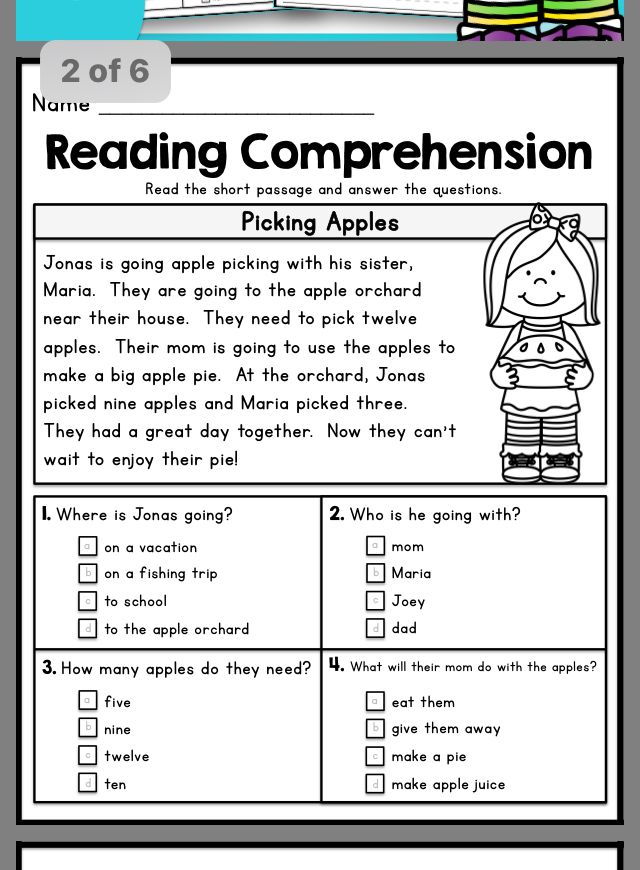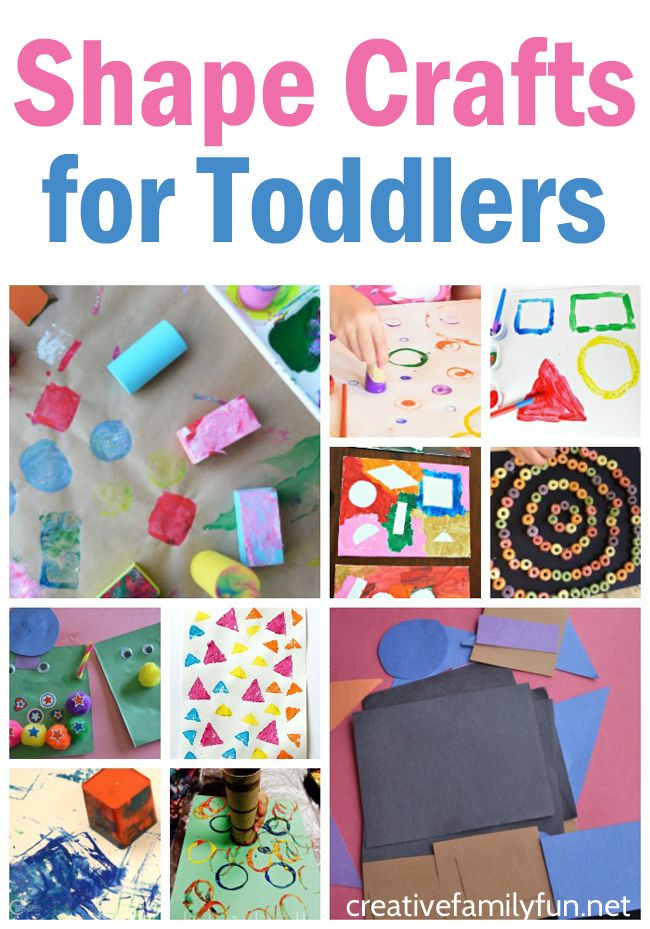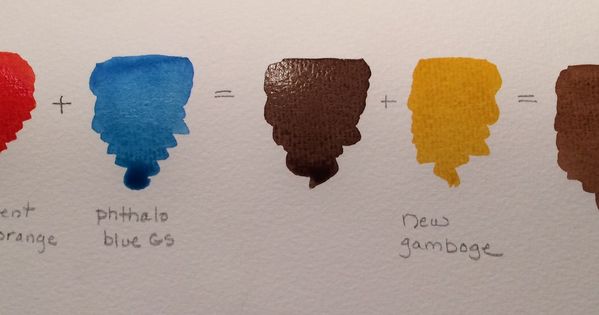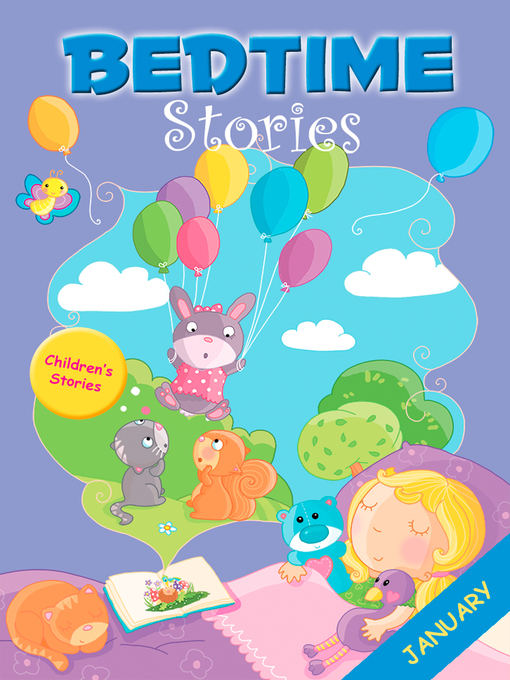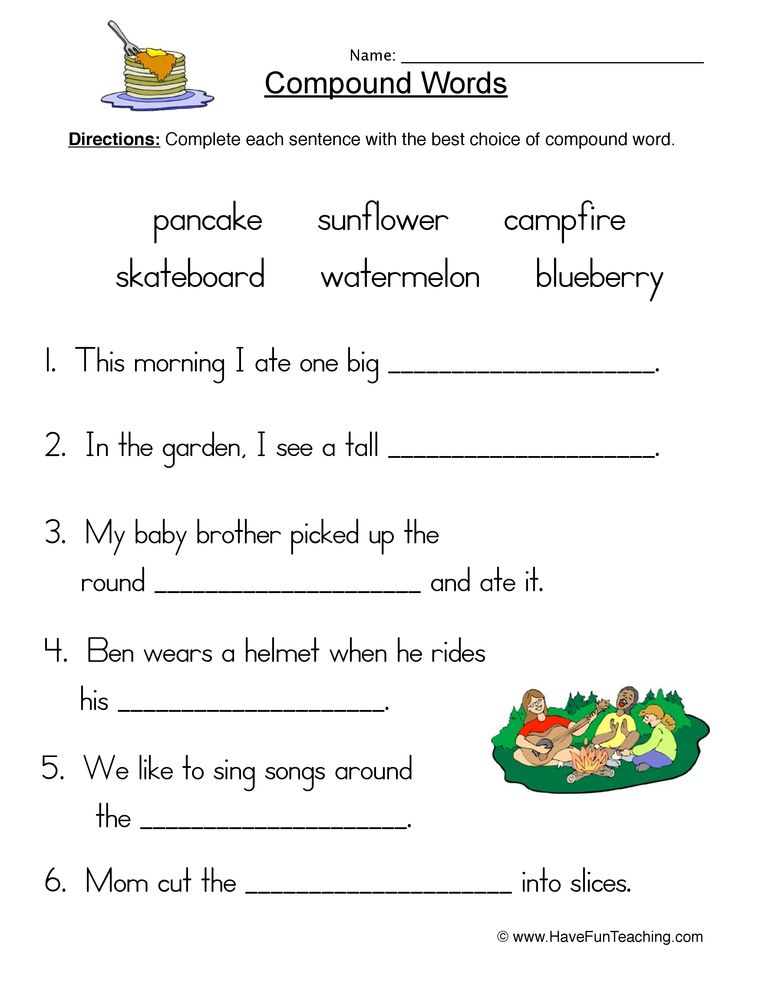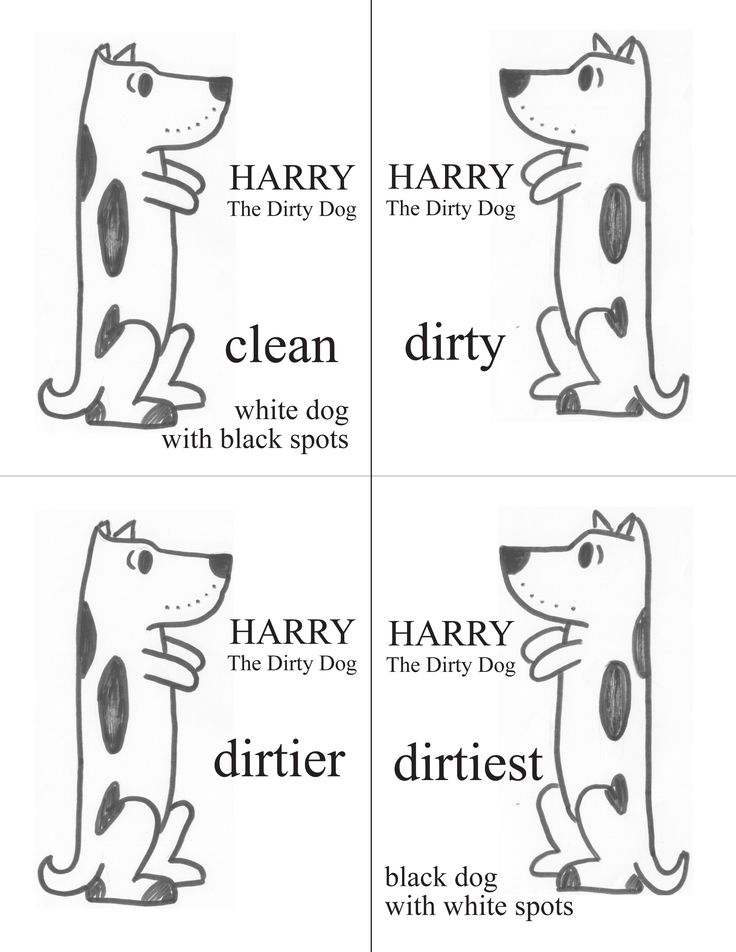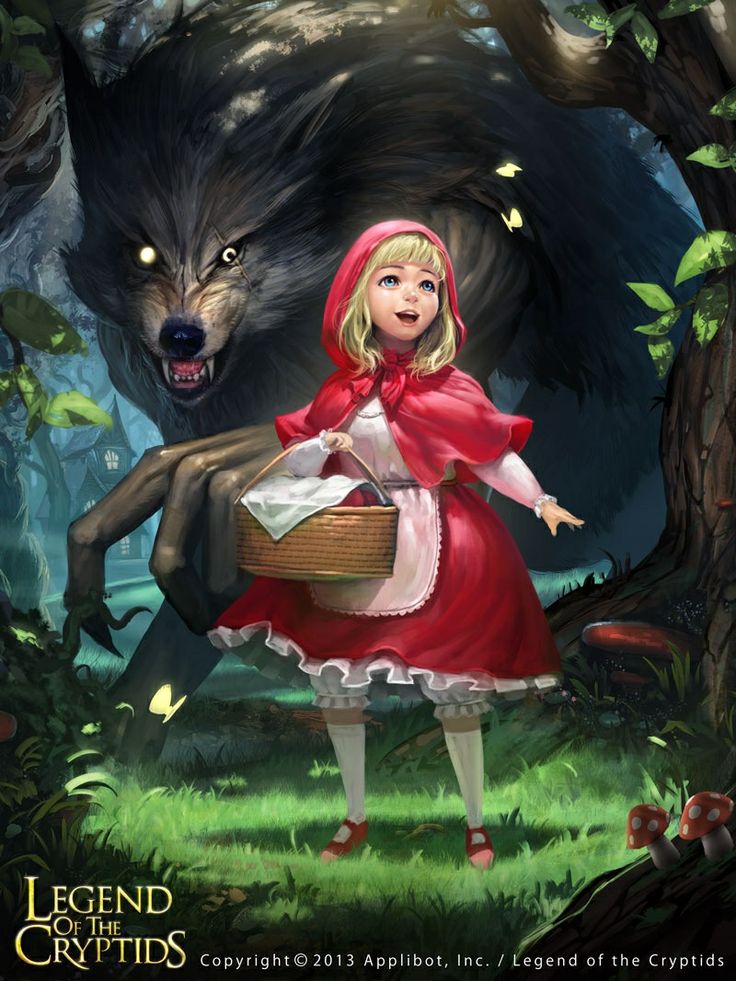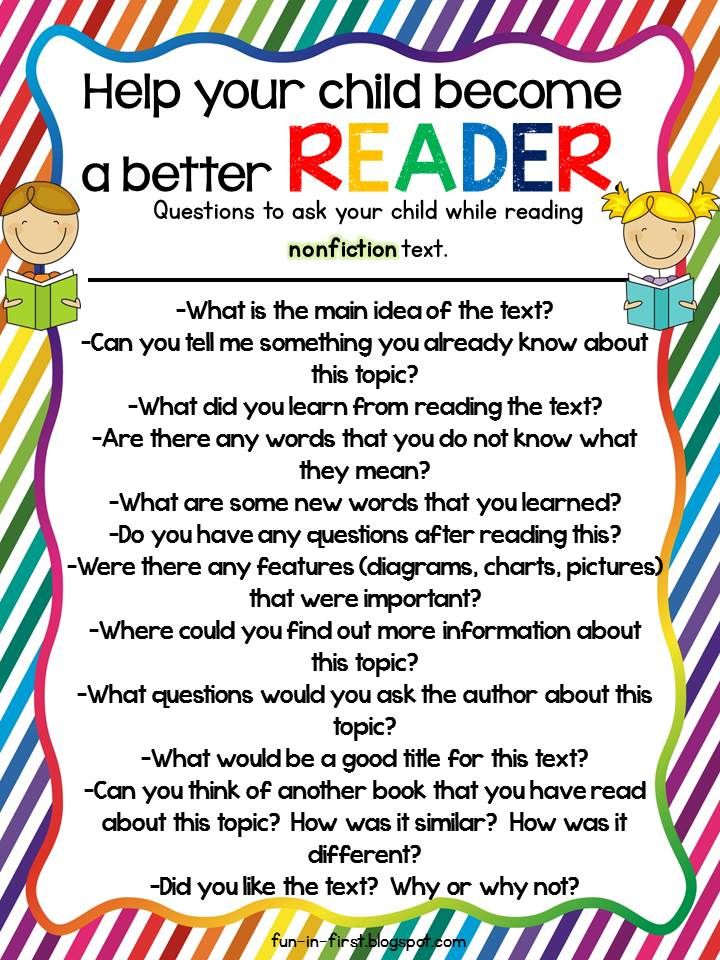Reading comprehension activities for 1st graders
First Grade Reading Comprehension Activities
First grade is an exciting time of discovery for early readers. They’re spending less time decoding and word solving and more time comprehending and making sense of the texts they’re reading. Early readers are building reading identities and reading for meaning and joy. Explicitly teaching reading comprehension strategies like making predictions, asking questions, retelling, and inferring helps young readers build the skills they need. These first grade reading comprehension activities are a good place to start.
1. String up a retelling rope
Learning how to retell a story helps young learners as readers and thinkers. It helps them organize their thoughts as they read and recognize when their thinking changes. Using these symbols representing different elements of a story, students can string up a cute retelling rope while gaining valuable comprehension skills.
Learn more: First Grade W.O.W.
2. Visualize the story with illustrations
Visualizing is an important skill for understanding what you’re reading. This blog includes two fun visualizing activities. In the first, students are given a title and are asked to draw an illustration that matches that title. In the second, students are given clues about an object and are asked to draw the object the clues are hinting at.
Learn more: You Clever Monkey
3. Make predictions with a graphic organizer
Making predictions is a just-right reading strategy for emerging readers. During a read-aloud, find a few good stopping points to ask students what they think will happen next.
ADVERTISEMENT
Learn more: Brown Bag Teacher
4. Make a “beginning, middle, and end” flip chart
One tried-and-true way to teach summarizing to early readers is instructing them to identify the beginning, middle, and end of a story. This easy-to-make flip chart is just an 8 x 11 piece of plain paper folded vertically then divided into thirds. On the front half, students will draw a picture of what happens in the three sections of the story.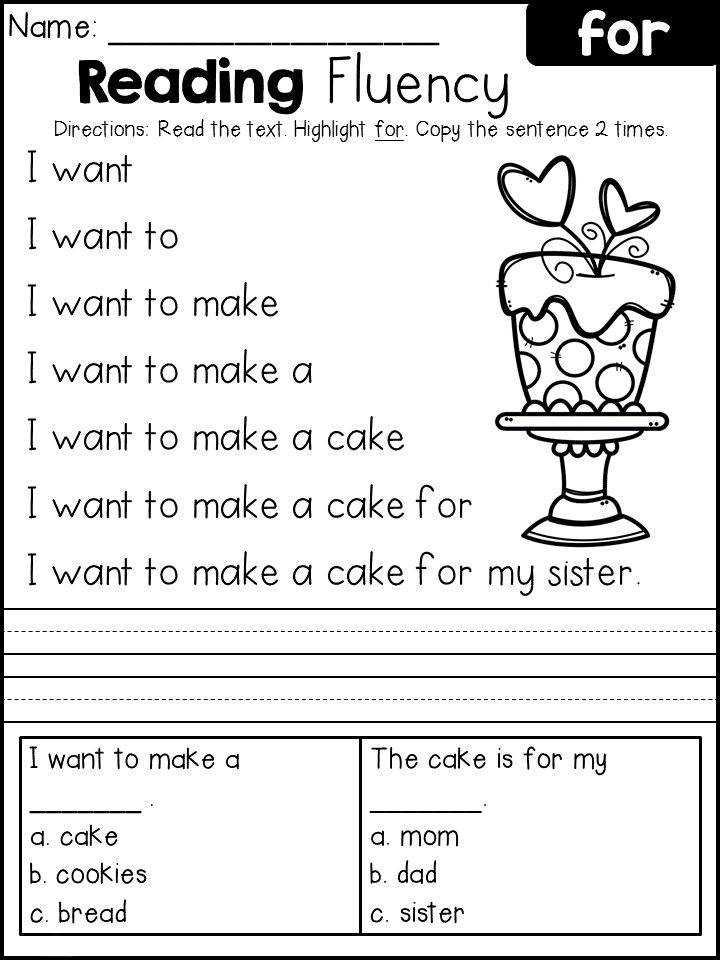 Underneath each flap is a short written description.
Underneath each flap is a short written description.
Learn more: Bishop’s Blackboard
5. Ask questions with story sticks
Good readers ask questions before, during, and after they read. These cute story sticks make a game of first grade reading comprehension. Perfect to use with small reading groups or with partners.
Learn more: The Happy Teacher
6. Master the five-finger retell
One strategy you can teach students is the five finger retell. Each finger stands for a different part of the story. Assigning a different finger for each part gives students a kinesthetic connection and makes it easier for them to remember.
Learn more: Mrs. Wheeler’s First Grade Tidbits
7. Summarize using simple signal words
Sometimes with early readers, simpler is better. Start with these basic questions—who?, what?, when?, where?, how?, and why?—to help kids go deeper into their understanding.
Learn more: This Reading Mama
8.
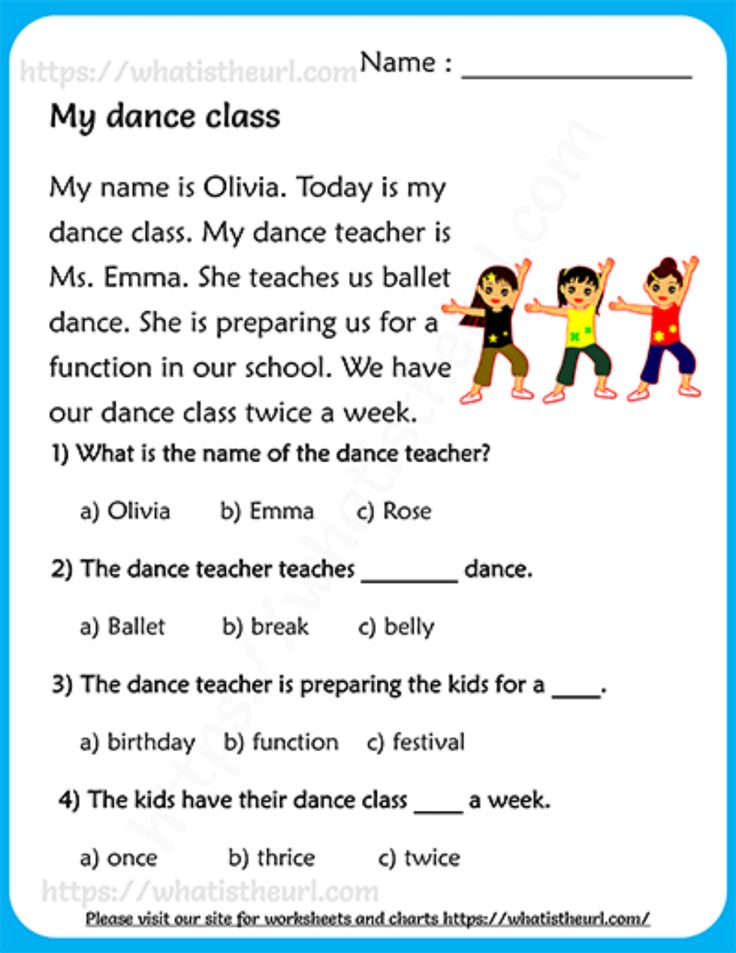 Practice with story maps
Practice with story mapsThere are tons of fun tools to help students build reading comprehension, and story maps are one of them. Here are 15 free downloadable story maps to help your first graders practice going beyond just the words when they read.
Learn more: Education.com
9. Figure out problem and solution with a graphic organizer
Every fiction story has, among other elements, a problem and solution. This lesson helps students understand that a story’s problem and solution fit together like pieces of a puzzle.
Learn more: My Primary Paradise
10. Retell the story using LEGO bricks
Put two things that first graders love together: reading and building. Read a story together, then allow students to use blocks to build a scene from the story. As they build, they can describe details from the story.
Learn more: The Educators’ Spin On It
11. Retell using story cubes
Retelling is a helpful comprehension skill for readers. These six cubes encourage readers to retell the story in different ways. They are prefect for reading partners and to use with small groups.
These six cubes encourage readers to retell the story in different ways. They are prefect for reading partners and to use with small groups.
Learn more: Every educaid
12. Play the Oh Snap! word game
Sight words (aka high-frequency words) are words readers encounter most frequently in texts. Early readers benefit from knowing a large bank of sight words, which encourages fluent reading. This fun sight word game is a great way to improve reading skills and build reading fluency.
Learn more: School Time Snippets
13. Use scooping phrases
The goal of reading fluency is better comprehension. To read with fluency or expression, readers must comprehend the story events. Teach early readers to use “Scooping Phrases” to scoop up words to form phrases within sentences. This effective strategy also works well with struggling readers.
Learn more: This Reading Mama
14. Introduce wordless picture books
As readers encounter more-difficult texts, character traits become less explicit.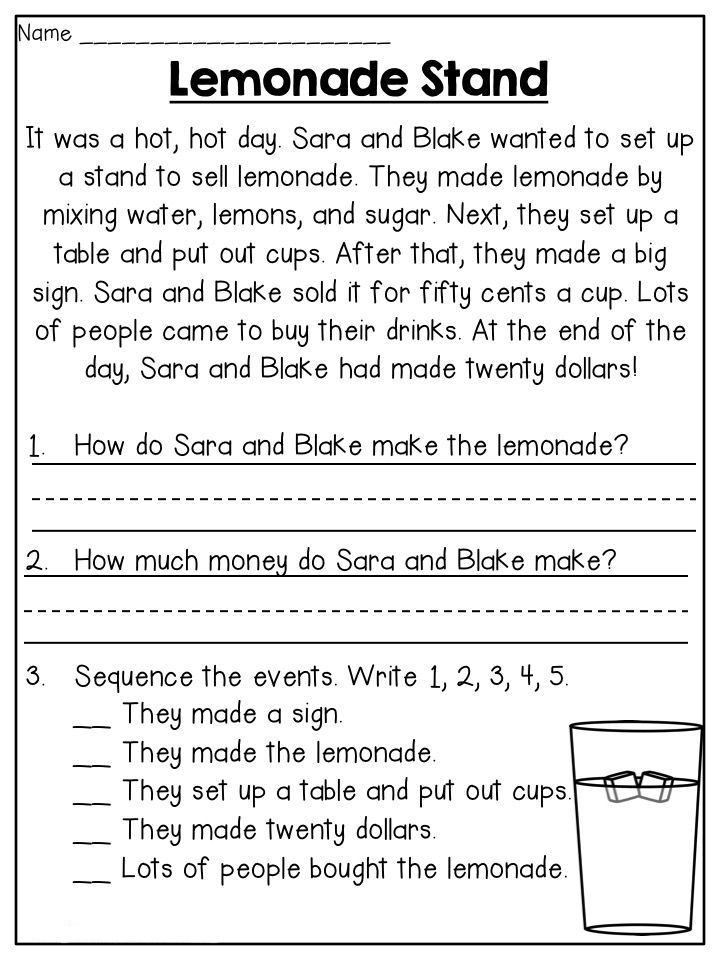 To determine what the character is like, the reader has to do more inferential work. Using wordless picture books is a great way to introduce early readers to making inferences.
To determine what the character is like, the reader has to do more inferential work. Using wordless picture books is a great way to introduce early readers to making inferences.
Learn more: Ashleigh’s Education Journey
15. Inference using thought bubbles
Foundational inference activities give first graders an opportunity to practice their inferring skills. As they move into texts, first graders can infer what a character is thinking in the story and then add a thought bubble to explain it.
Learn more: The Teacher Next Door
If you like these first grade reading comprehension activities, check out our fun, printable first grade writing prompts.
Plus, get all the latest teaching tips and tricks by signing up for our newsletters!
Comprehension: Activities for Your First Grader
Overview
First graders are quickly developing impressive skills as active readers! Here are some of the things your first grader can do:
- Independently read and retell familiar stories.
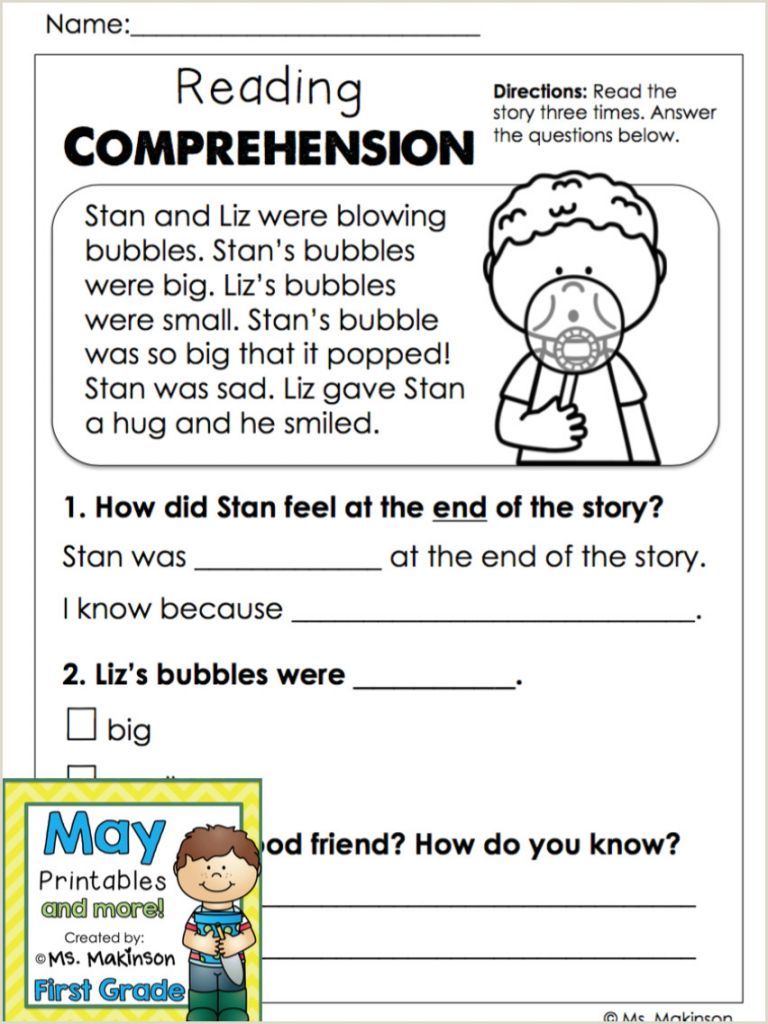
- Notice when a text doesn't make sense, and begins to use strategies such as rereading, predicting, and questioning to understand it.
- Read and understand fiction and nonfiction and know the difference between made-up stories and facts.
- Predict what will happen next in stories.
- Think about and share prior knowledge before reading a nonfiction book.
- Discusses how, why, and what-if questions in sharing nonfiction texts.
- Answer simple written comprehension questions.
Here are some basic things you can do to boost your child's comprehension skills:
Try to read at home together every day
Just 15 minutes each day makes a big difference! Although your first grader may be reading independently, reading aloud allows you to introduce your child to more sophisticated vocabulary and stories, including chapter books. It's also one of the best ways to help children learn about the world and make connections between their own lives and what's in the book — and that helps children see the world with empathy.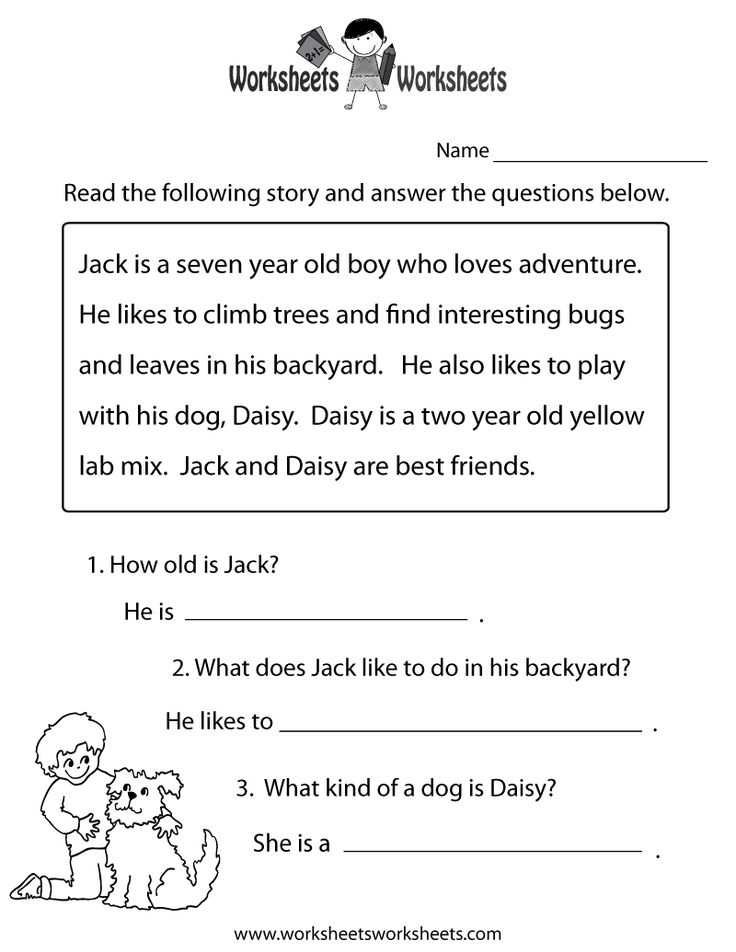 And last but not least, it's a wonderful time to snuggle up with your child and share the experience of reading and discovery together.
And last but not least, it's a wonderful time to snuggle up with your child and share the experience of reading and discovery together.
Keep it fun
Remember that reading together should spark curiosity, joy, and a desire to explore and learn. Conversations about books should be enjoyable, and not a set of quizzes and questions. As you try some of the activities listed below, remember to keep it light and lively for your child.
Storytelling and audiobooks count, too
Sharing family stories out loud and listening to audiobooks are wonderful ways to expose your child to language, how stories are built, and knowledge about the world.
Bring in the nonfiction
There are so many great nonfiction and informational books for very young kids (such as the popular DK Eyewitness series and National Geographic series). Try to include some of these during your next trip to the public library. Children love learning about the real world and are proud to share what they know!
Explore your world together
Even a walk around the neighborhood or a trip to the grocery store can be a rich learning experience for young children.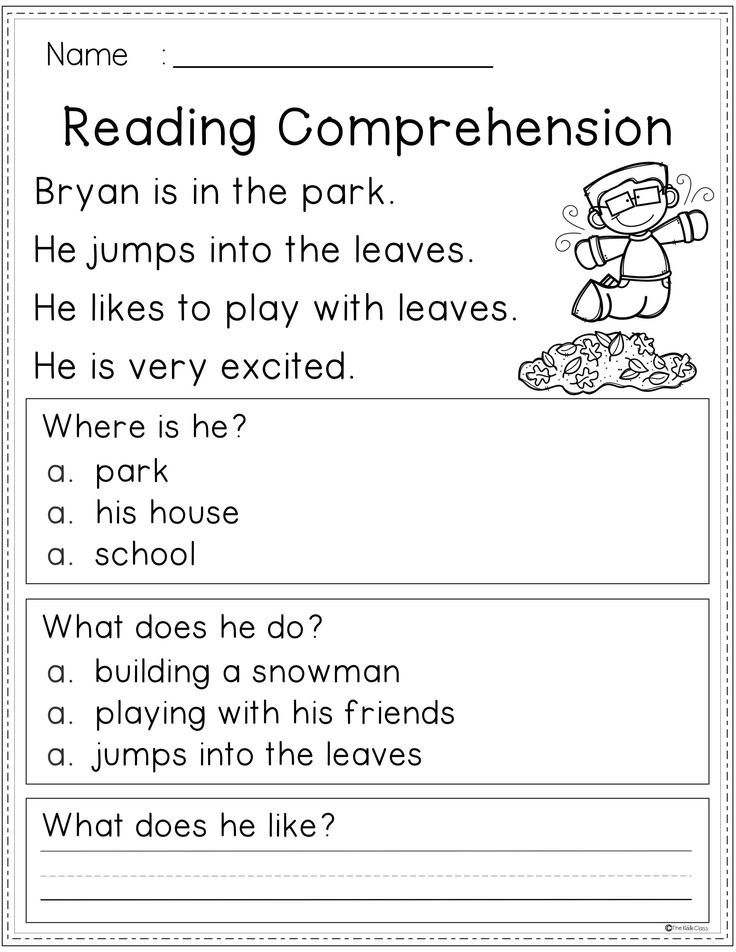 On a walk, your child may watch what's going on at a construction site, and then be able to connect it to stories about building and the big machines that make it happen — bulldozers, cranes, cement mixers, and more. These personal connections help children connect what they read with what they know — a powerful way to build comprehension skills!
On a walk, your child may watch what's going on at a construction site, and then be able to connect it to stories about building and the big machines that make it happen — bulldozers, cranes, cement mixers, and more. These personal connections help children connect what they read with what they know — a powerful way to build comprehension skills!
Signs of good reading comprehension in first graders
Try these comprehension activities at home
"I predict ..."
When you sit down for a read aloud, look at the book's cover together. Ask, "What do you think this book might be about? Why? Can you make some predictions?" Guide your child through the pages, discuss the pictures, and brainstorm what might happen in the story. Talk about any personal experiences your child may have that relate to the story.
Five-finger retell
After reading a story together, have your child tell you five things about the story, using her fingers to talk about each one:
- Characters: who was in the story?
- Setting: where did the story take place?
- Events: what happened in the story?
- End: how did the story end?
- Favorite character or part of the story
Active reading
Model active reading when you read with your child. Talk about what's happening as you're reading. Stop and discuss any interesting or tricky vocabulary words. Help your child make pictures of the story in his mind. Ask your child, "What just happened here? How do you think that character feels? Have you ever felt like that? What do you think will happen next?" Not only will this develop your child’s comprehension, but critical thinking skills as well.
Mind movies
When you come to a descriptive passage in a book, have your child close her eyes and create a mental movie of the scene.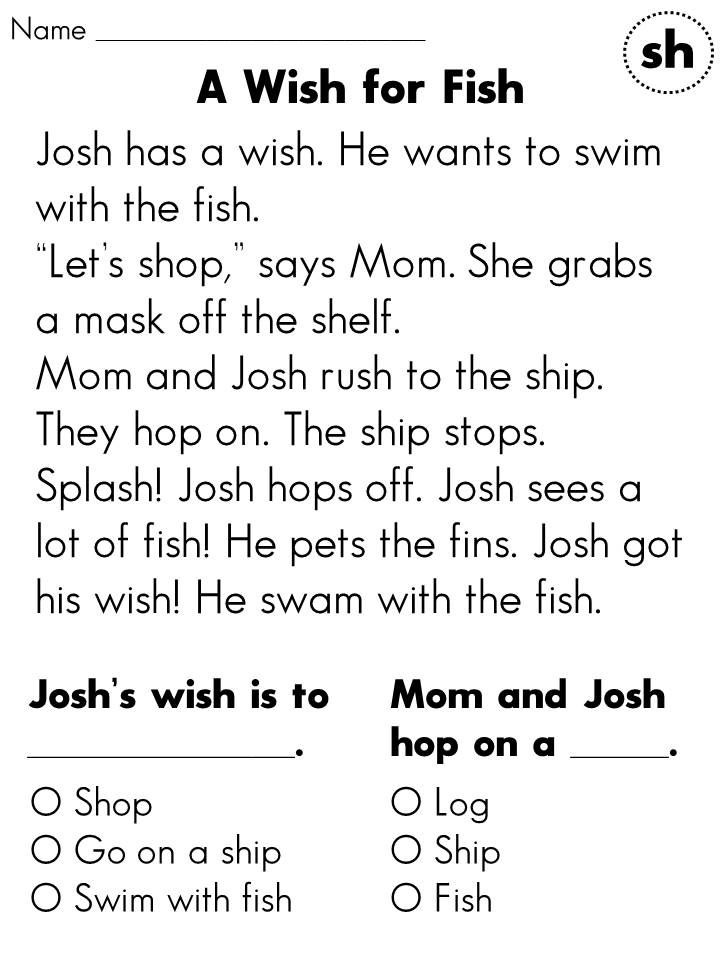 Encourage her to use all five senses. Read the passage over together, looking for details that bring the scene to life. Ask questions like, “How do you know it was a hot day? Which words help you understand that the child was lonely?”
Encourage her to use all five senses. Read the passage over together, looking for details that bring the scene to life. Ask questions like, “How do you know it was a hot day? Which words help you understand that the child was lonely?”
Tell me about it
After a read aloud, one of the best and easiest ways to check for understanding is to ask your child to summarize what the book was about in their own words. You can ask a question or two to help your child clarify her thinking or to add more detail.
Can your child tell you what happened in the story?
This video is from Home Reading Helper, a resource for parents to elevate children’s reading at home provided by Read Charlotte. Find more video, parent activities, printables, and other resources at Home Reading Helper.
Think alouds
Connect the book to your child's own life experience.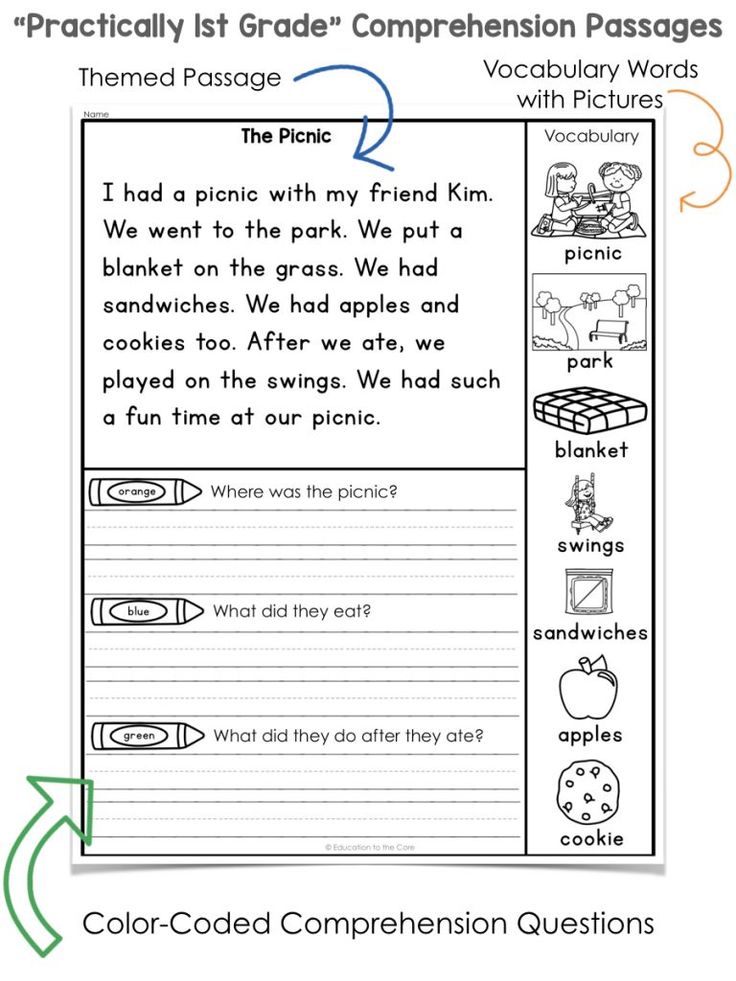 For example, A River Dream: "This book reminds me of the time my father took me fishing. Do you remember the time we went fishing?"
For example, A River Dream: "This book reminds me of the time my father took me fishing. Do you remember the time we went fishing?"
Connect the book to other books they have read. For example, Mufaro's Beautiful Daughters: "This story reminds me of Cinderella. Both stories are about sisters. Do you know any other stories about nice and mean sisters? Let's keep reading to find out other ways the stories are similar."
Connect the book to big ideas/lessons. For example, Stellaluna: "This story helps me understand that we are all the same in many ways, but it's our differences that make us special."
Wordless
Wordless picture books provide your child with practice using clues to create meaning. There are no wrong stories with wordless picture books, only variations based on what the "reader" sees and puts together. Rosie's Walk, Good Dog, Carl, and Beaver Is Lost are all interesting and fun wordless picture books to explore.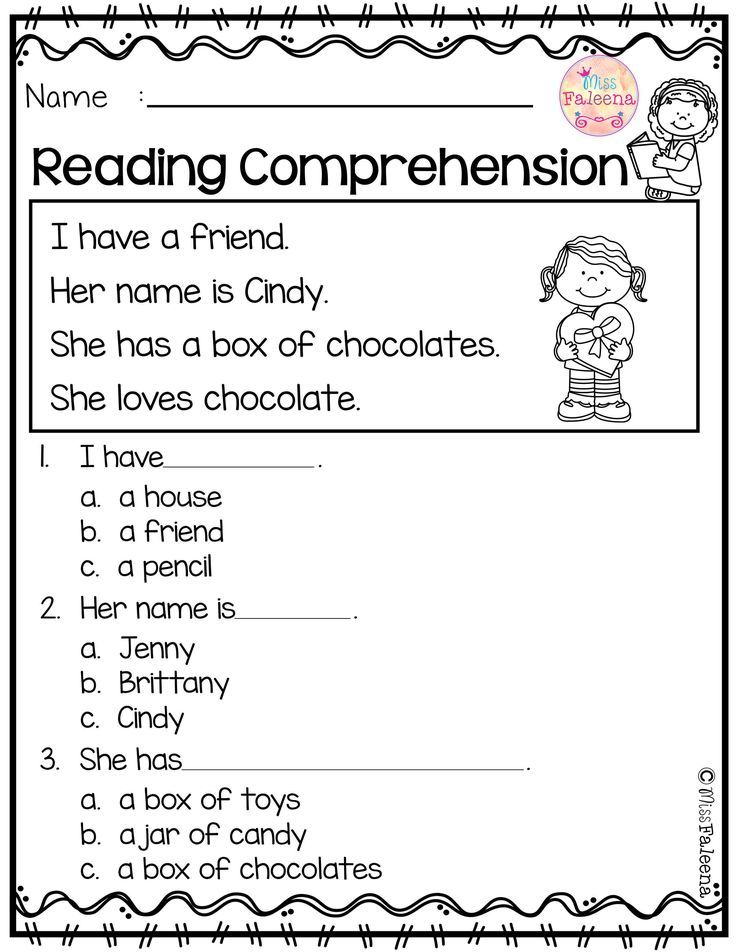 Find more wordless books on BookFinder.
Find more wordless books on BookFinder.
Map this book!
Draw a map of the book's setting, and be sure to include the places where the main action happens!
Beginning-middle-end
This is a great way to see if your child understands the main parts of a story. After reading a book together, give your child three sheets of paper, with "beginning" on one sheet, "middle" on the second sheet, and "end" on the third sheet. Ask your child to think about the three parts of the story, and then draw what happened on each on the sheets. Arrange the sheets in order, left to right. What happens if you re-arrange the sheets? Does the story still make sense?
Words, words, words
Be sure to include books with rich vocabulary in your read alouds and call attention to interesting words and phrases from the story. This may include repeated phrases or idioms (such as "get cold feet" or "I'm all ears"). Offer a kid-friendly definition and connect the new word or phrase to something your child already knows. Talk about how the author used language or words to make the text interesting, informative, funny, or sad.
Talk about how the author used language or words to make the text interesting, informative, funny, or sad.
Illustrated timelines
After reading a story, have your child create an illustrated timeline of events from the story. Tape together five sheets of paper along the 8-1/2-inch side to create one very wide sheet that is 55 inches X 8-1/2 inches. To help plan the timeline, your child can add numbers that mark important points of the story. Then it's time to fill in the sequence of events with words and pictures. Once the timeline is complete, ask your child to re-tell the story — acting it out is okay, too! Variation: Create the timeline using Post-Its on a wall or outside using sidewalk chalk.
Talk show
Set up a talk show set with two chairs facing each other. If you like, make two microphones out of paper tubes or other craft supplies. You are the host and your child is a character from the book. Ask questions about the character, such as who you are, why you are important to the story, what happened to you in the story, what is the craziest interaction you had with another character, etc.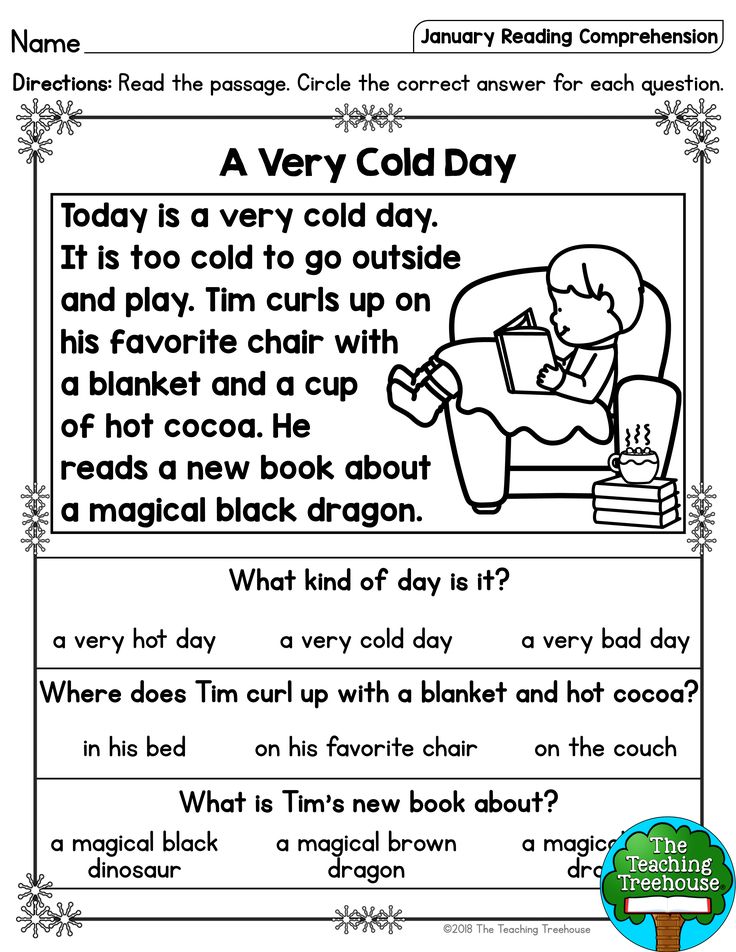 Then switch roles!
Then switch roles!
Book trailer
Using a cell phone camera or other recording device, make a short video of your child talking about about why he recommends this book. Encourage your child to show the book cover and some of the inside pages when talking about a certain character or action sequence. Share the book trailer with family and friends!
Picture the character (Part 1)
Try this activity from the Florida Center for Reading Research (FCRR). The FCRR "At Home" series was developed especially for families! Watch the video and then download the activity: Picture the Character. See all FCRR comprehension activities here.
Picture the character (Part 2)
Try this activity from the Florida Center for Reading Research (FCRR). The FCRR "At Home" series was developed especially for families! Watch the video and then download the activity: Picture the Character.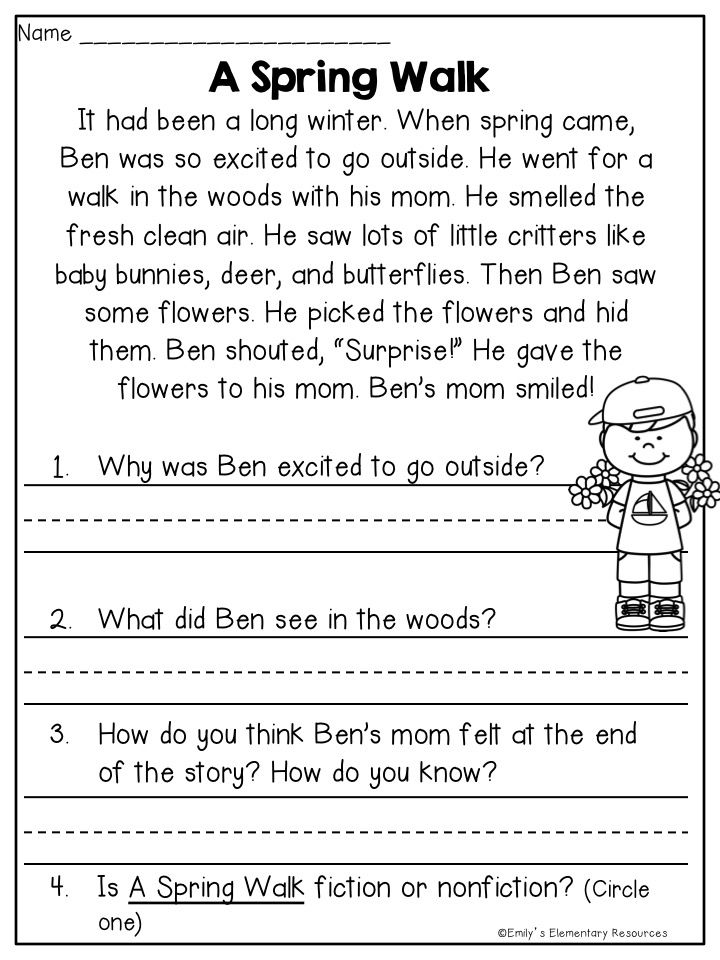 See all FCRR comprehension activities here.
See all FCRR comprehension activities here.
Does your first grader read to learn about things?
More comprehension resources
We teach the child to understand the meaning of the text. Free exercises
Many children find it very difficult to make the transition from rote reading to conscious reading. One reason for this may be dyslexia, which makes it difficult for a child to focus on letters and link them into words. Therefore, reading for such children turns into torture. Read more about what this violation is and how to understand if your child has it, read here.
⠀
Another reason why it is difficult for a child to understand what they read is the speed of reading.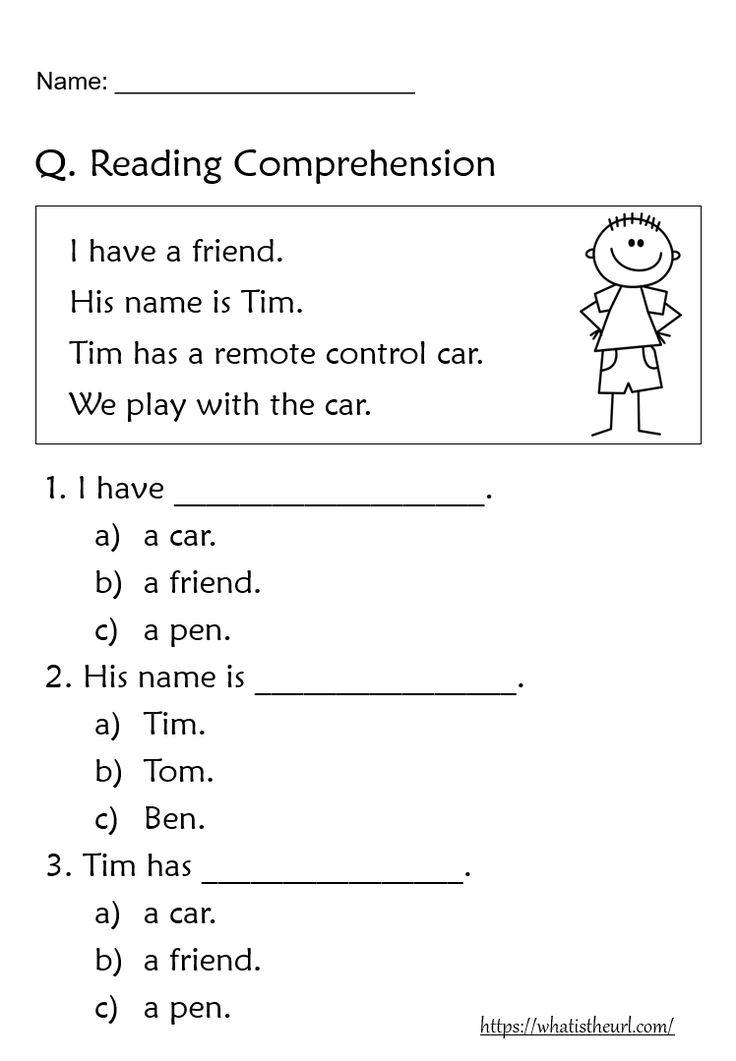 A child who reads slowly usually forgets what he was reading when he reaches the end of a page or paragraph. nine0003
A child who reads slowly usually forgets what he was reading when he reaches the end of a page or paragraph. nine0003
⠀
There can be several reasons for slow reading:
- poor concentration of attention;
- narrow field of vision, when it is difficult for a child to focus on a whole word, phrase or sentence;
- speaking the text aloud or to oneself;
- when reading, the eyes move in a chaotic manner.
⠀
We will look at a few simple exercises for preschoolers and schoolchildren that will help increase their reading speed. nine0003
Learning to read faster
1. Attention exercises
Set a timer and ask the child to name all the letters in alphabetical order starting with the letter A and going down the table.
This exercise also focuses on concentration. Ask the child not to read the words, but in order to name the colors in which the words are written.
2. Getting rid of regression
In order for the child to read word by word, not to jump from one line to another with his eyes and to be as focused as possible while reading - give the following exercise 5 minutes a day and the result will not be long in coming.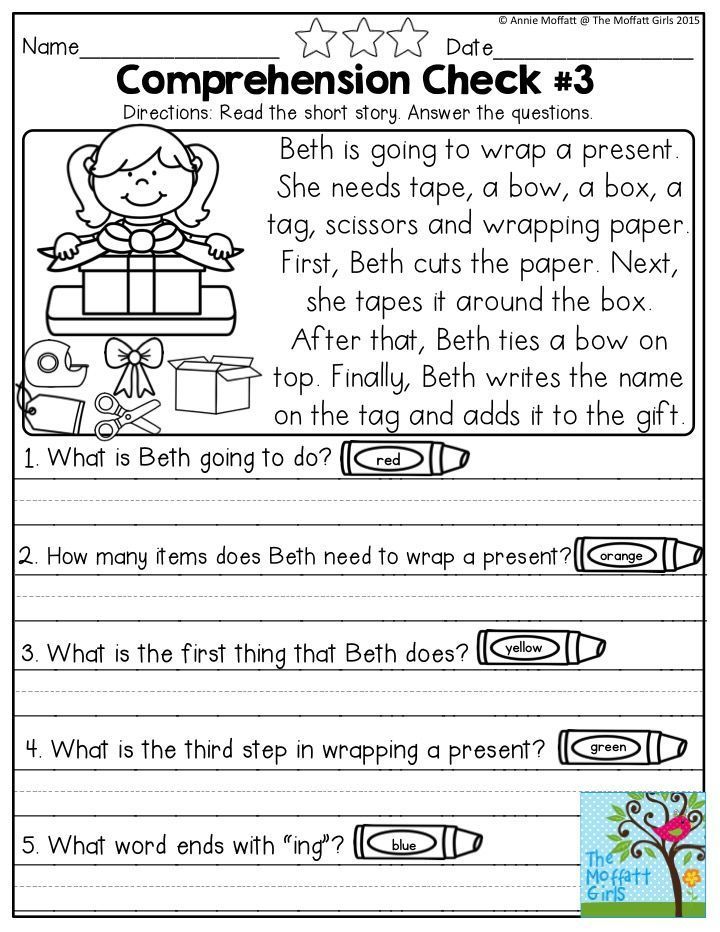 nine0003
nine0003
Letters, figures, numbers and words that are in the squares must be named sequentially. Through this exercise, the child learns to move his eyes correctly and avoid regression.
⠀
The sooner you get it, the better.
3. At the same time we train concentration of attention and logic
Ask the child to correctly form words in sentences.
Study with your child for 15-20 minutes every day and after 2-3 weeks he will read faster. And if you have already tried, but nothing worked out for you or you simply do not have enough time to study, we offer you our Reading Simulator course. nine0003
⠀
After training, your child will learn to read faster, will understand what they read and begin to read with interest, and will be able to write simple sentences in block letters. You can sign up for a trial lesson here.
⠀
Now let's move on to exercises aimed at conscious reading.
7 game exercises that will teach a child to understand what they read
For example, let's take a passage from a fairy tale and show all the exercises on it.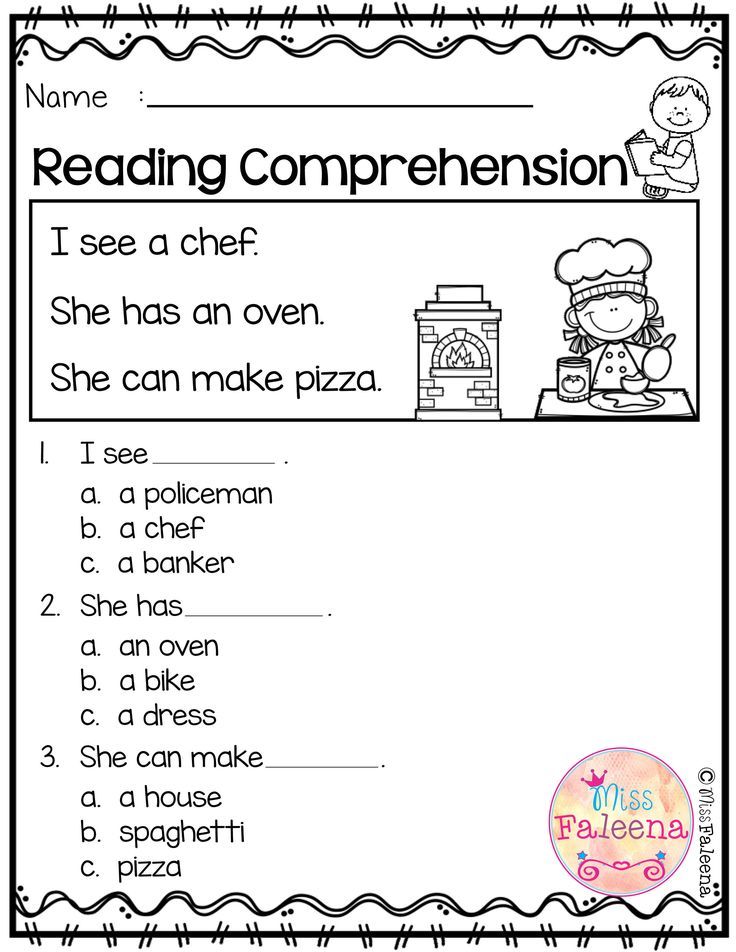 You can also choose different passages from your child's favorite fairy tales for each exercise. nine0003
You can also choose different passages from your child's favorite fairy tales for each exercise. nine0003
⠀
In order not to spoil the books and not to type the text, find the electronic version of the fairy tale, select any passage and print it out.
⠀
The text on which we will demonstrate our exercises will be taken from a children's book recommended by our student's mother Elena.
⠀
An excerpt from the book "Shmyak the Kitten" by Robin Scotton
1. Visualizing the text
Pictures help to involve both hemispheres of the child's brain, making it easier for him to understand and remember the meaning of what he read. You can visualize the text using self-made mnemonic tables. Below is an example, and how to do them correctly, read here. nine0003
2. Making the text out of parts
Take the printed text and ask the child to read it once or twice. Then cut the text into paragraphs, shuffle it, and ask him to reconstruct the text by putting the pieces together in sequence.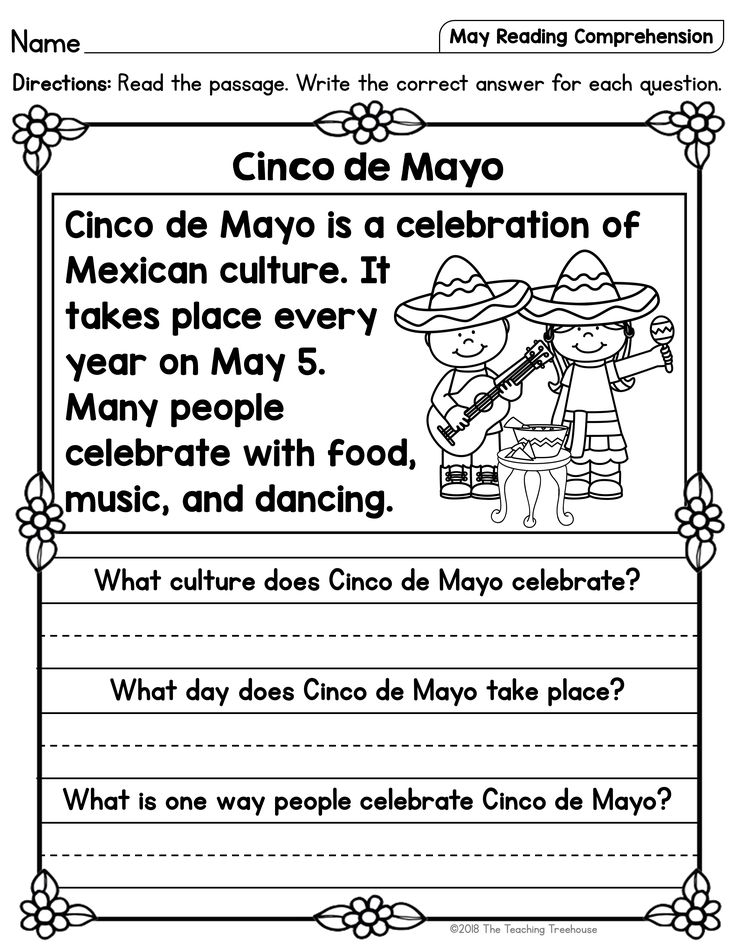
3. Playing teacher
Take the printed text and ask the child to cross out the words in such a way that the main meaning is not lost.
4. We train logic and learn to analyze what we read
We invite you and your child to solve word logic problems. Remember the famous Soviet riddle “A, I, B were sitting on a pipe. A - fell, B - disappeared. Who stayed on the pipe? Answer - And remained on the pipe. nine0003
⠀
This is a very simple and interesting puzzle for preschoolers, which demonstrates to children the great possibilities of the Russian language.
⠀
Below are more examples of tasks for training.
We also recommend that you develop your child's logical thinking by using our simple ideas for creating games from objects that you have at home.
5. Analyzing the text with questions
A good way to help your child build a sense chain is to ask questions about the text:
⠀
- Who is the main character?
- What is happening to him?
- Why do you think this is happening to him? Why was he in this situation?
- What does this situation teach him?
- What would you do in this situation?
- Let's imagine what could have happened if he had acted differently?
⠀
Such questions will help the child to grasp the meaning, highlight the main idea and easily retell what they have read.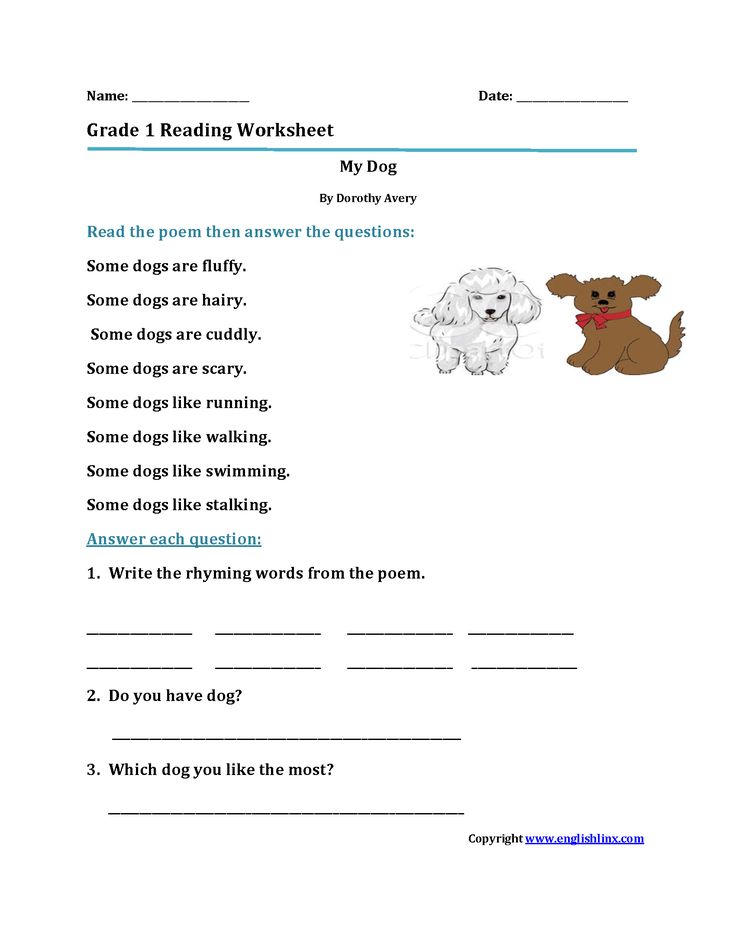
⠀
To summarize!
⠀
A child's ability to work with text directly affects academic performance. Start exercising as early as possible. Using our exercises, you will teach your child to think logically and correctly perceive textual information. These are the basic skills that will allow you to become a thoughtful reader and will help your child develop throughout his life.
⠀
Read also:
9 life hacks: how to quickly remember information for a child
How to develop a child's memory with kinesiology exercises!
Simple games for learning Russian. For children from 4 years old
5 exercises with text to develop meaningful reading
Photos: Unsplash, personal archive of Yulia Serykh. Illustration: Julia Zamzhitskaya
Meaningful reading is the basis of functional literacy. After all, in order to use information from the text, you need not just to read it, but to correctly understand the content.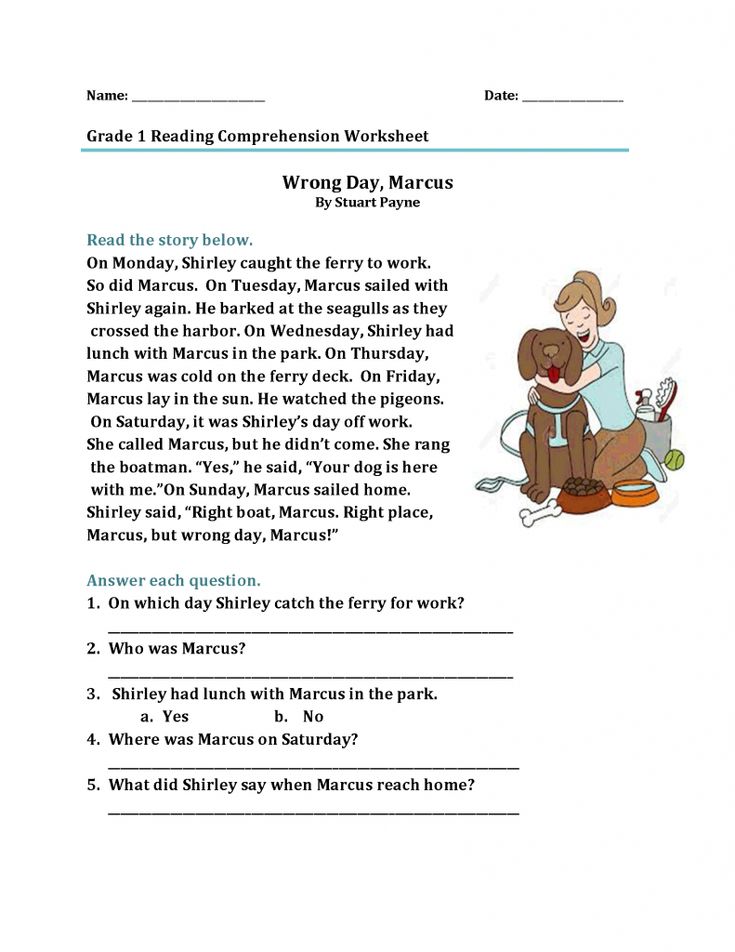 Together with Yulia Serykh, the founder of Antara Academy, an online school for the development of intelligence and soft skills, we have prepared a selection of exercises that will help develop this skill in children from 6 years old. nine0151
Together with Yulia Serykh, the founder of Antara Academy, an online school for the development of intelligence and soft skills, we have prepared a selection of exercises that will help develop this skill in children from 6 years old. nine0151
-
Numbers instead of letters
What develops: the speed of visual reactions.
Age: 8-17 years old.
Take a short piece of art that is appropriate for the child's age. Volume: 10-12 sentences. Type it on the computer, replacing some letters with numbers similar to them (for example, t - 7, a - 4, d - 9, etc.). Print and invite the child to read this text, and then answer questions about its content. nine0003
It may be difficult to understand the text the first time, but if you keep repeating this exercise, the difficulty will decrease.
-
Beads and strings
What develops: attention and memory
Age: from 10 years old.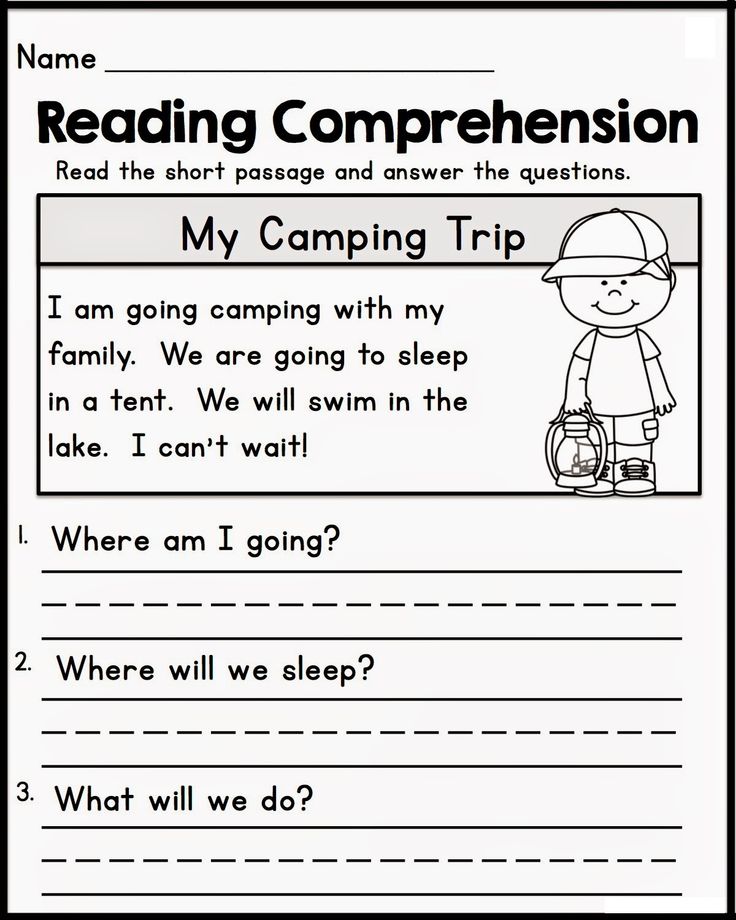
Take any sentence, say a proverb, and arrange the letters that make up the words, as shown in the picture below. The task of the child is to collect words from the letters-beads that connect the "threads" of the same color. And arrange the words according to their meaning to make a sentence. nine0003
Older children can make complications: take longer words and increase their number, use interesting expressions, such as aphorisms. For younger children, the exercise is also suitable, but in a simplified form: the number of words is from three, but with fewer letters and is simpler in meaning.
-
Missing words
What develops: memory and creativity.
Age: 6-8 years old
Print out a short text on paper, such as an excerpt from a well-known children's fairy tale, and remove some of the words. You can exclude several adjectives, verbs and homogeneous members of sentences.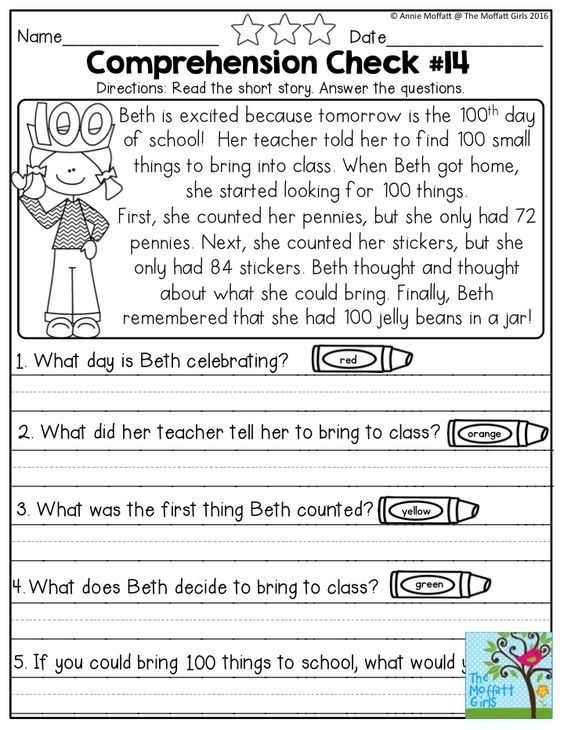 Vary the complexity of the text depending on the age and level of preparation. Invite the child to complete the text with the missing words, and then discuss the content of the text by questions.
Vary the complexity of the text depending on the age and level of preparation. Invite the child to complete the text with the missing words, and then discuss the content of the text by questions.
The exercise can also be used with children over 8 years old, but with some variations: after each sentence read, invite the child to rephrase it, keeping the meaning. nine0003
Advice : you can leave "guesses" for the most difficult missing words in the questions.
-
Offer limits
What develops: attentiveness and reading technique.
Age: 6-8 years old.
Type some text on the computer and remove all capital letters and dots from it. The task is to correctly break it into sentences. After completing the task, be sure to discuss the content of the text with the child using leading questions. nine0003
-
Find the syllable
What develops: attentiveness and concentration.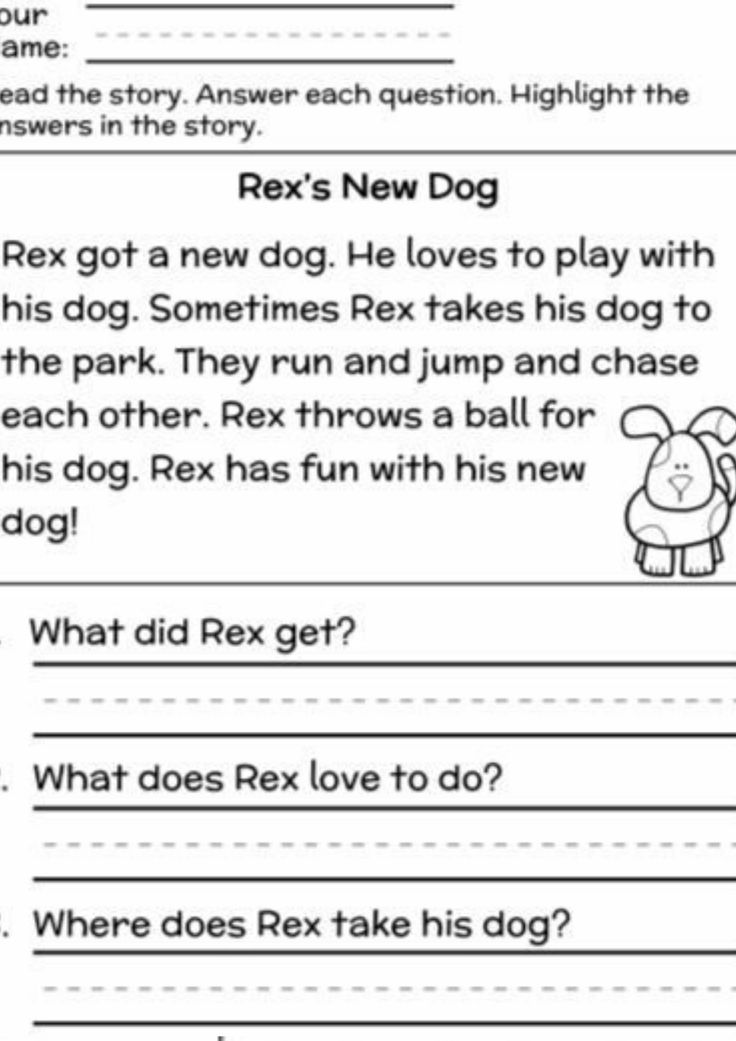
Age: 6-8 years old
Type letters on the computer in random order, without spaces. In several places, insert any syllable between the letters, for example, "ba". Ask the child to find all the inserted syllables.
For children over 8 years old, you can use the exercise in the same form, but limited in time. For example, give 1 min or 30 sec, depending on the amount of text. nine0003
Important: it is better to complete all tasks on a computer, in printed form, so that the child gets used to the typographic font.
More tasks to develop reading speed, reading literacy, intelligence and creativity - in the Antara Academy online school courses.
What are the advantages of the school?
— Courses developed by professors from Oxford, Moscow State University, the University of Birmingham and the University of Geneva.
— Classes are held in mini-groups of 4 people. The teacher gives the necessary time to each child and at the same time allows socialization and interaction in the group.